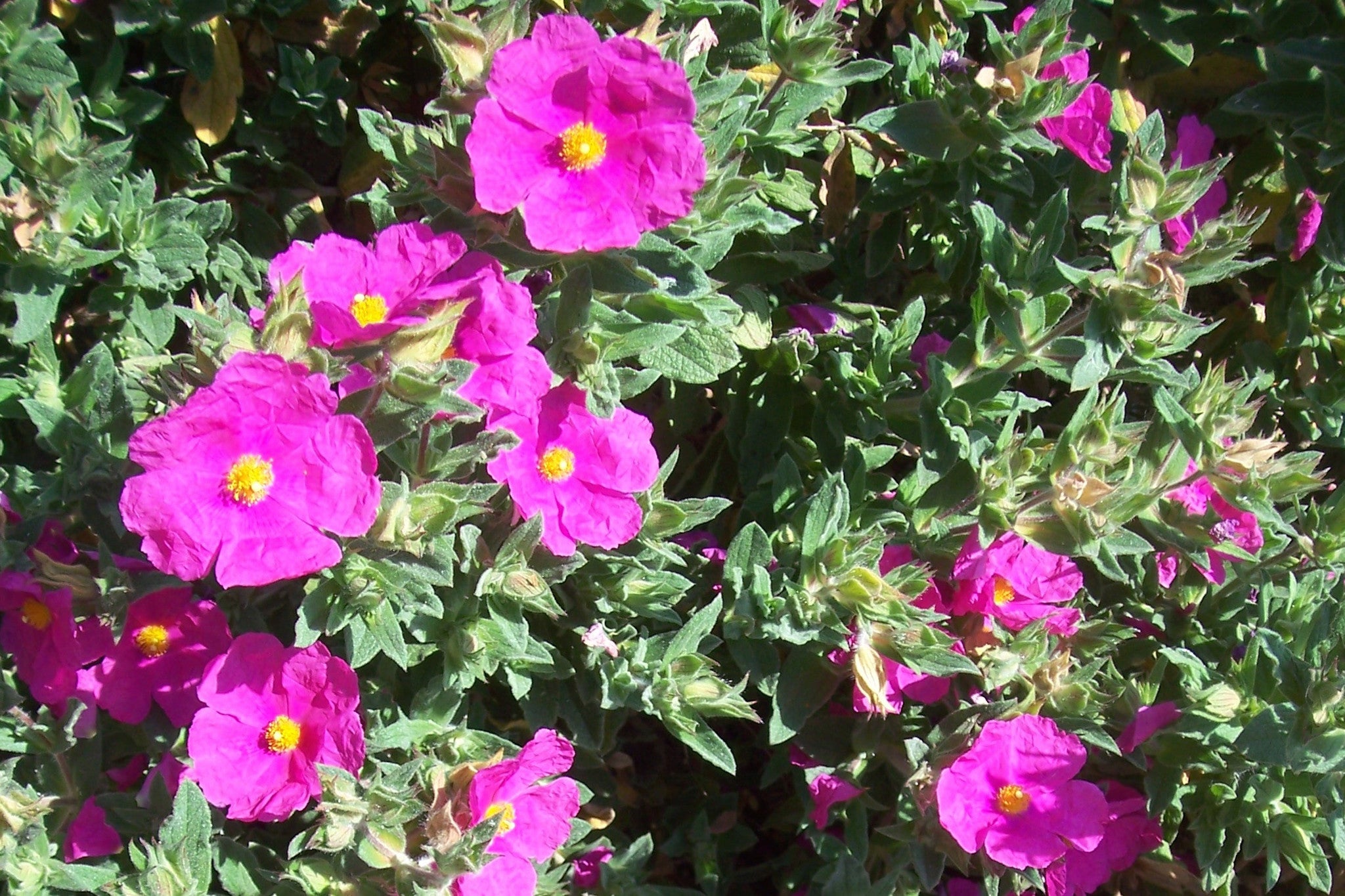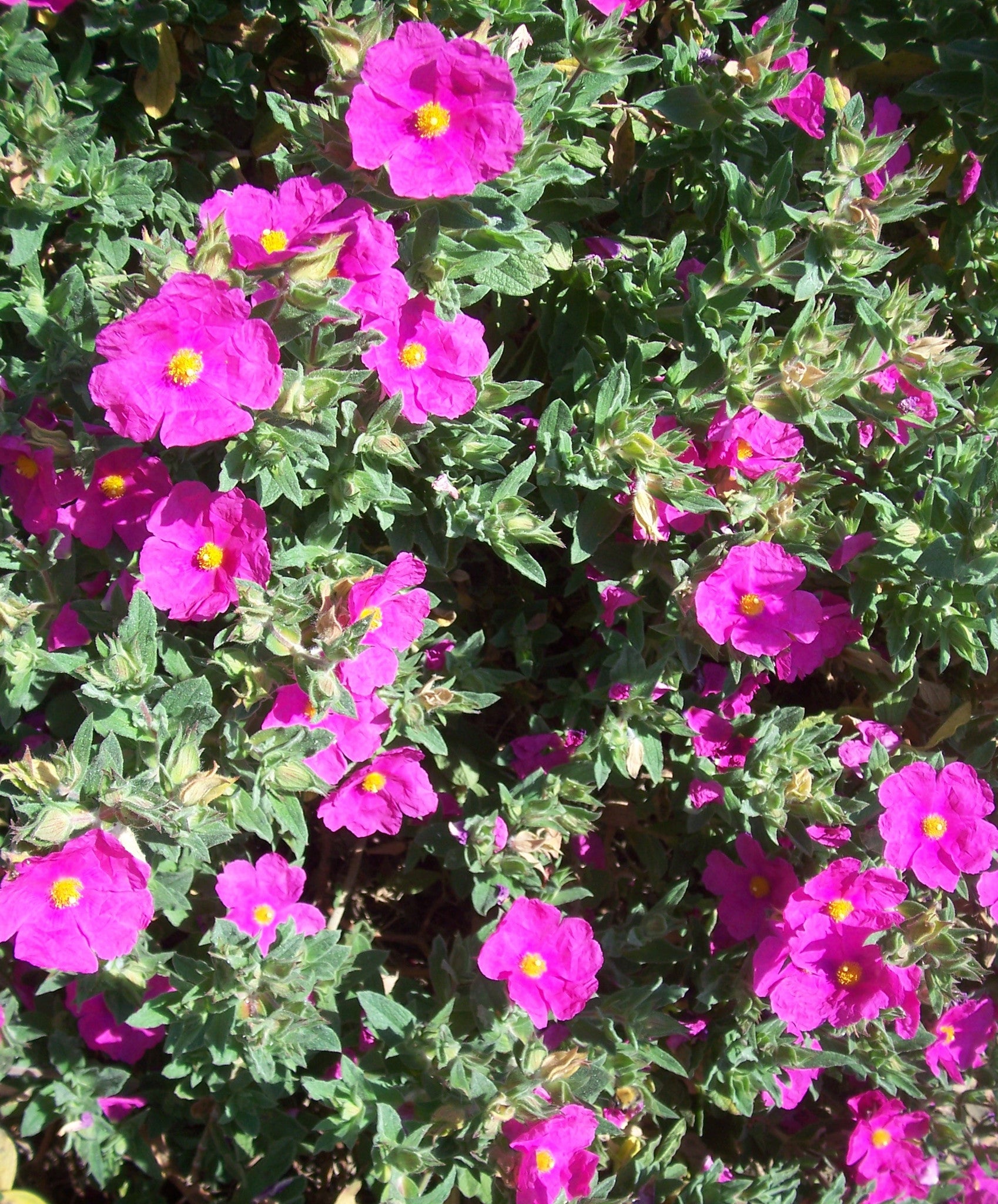Cistus x pulverulentus 'Sunset'
Approx. 0.5 litre pot
About this cultivar:
Cistus x pulverulentus 'Sunset' is a low spreading shrub with wavy, grey-green leaves and clusters of yellow-centred, rose-pink flowers 5cm across. Although often sold under the name Cistus crispus 'Sunset,' it is often confused with Cistus x purpureus 'Brilliancy.' (because they look almost identical). In reality we think this is a hybrid correctly designated Cistus x pulverulentus 'Sunset.' The hybrid-name is in turn a naturally occurring cross of C. albidus with C. crispus, discovered in southwestern Europe in 1929. Probably our favourite Cistus. It has the Royal Horticultural Society Award of Garden Merit.
- Position: Full sun, partial shade
- Soil: Almost any soil, grows well in Ballyrobert
- Flowers: July, August
- Other features: Grows well in Ballyrobert, Bees and Butterflies, Royal Horticultural Society Award of Garden Merit (RHS AGM)
- Hardiness: H4 - Hardy through most of the UK (-10 to -5°C), Fully hardy - grows well in Ballyrobert!
- Habit: Bushy
- Foliage: Evergreen
- Height: 30 - 60 cm (1 - 2 ft)
- Spread: 45 - 75 cm (1.5 - 2.5 ft)
- Time to full growth: 5 to 10 years
- Plant type: Herbaceous Perennial, shrub
- Colour: Red, pink, purple, green
-
Goes well with: Papaver, Aster, Astrantia and Salvia. Luzula nivea or Pennisetum
About this genus:
Cistus (from the Greek "Kistos" meaning "box") are perennial evergreen shrubs found on dry or rocky soils throughout the Mediterranean region, from Morocco and Portugal through to the Middle East, and also on the Canary Islands. Not only is Cistus popular as a garden plant, but the leaves and stems of a few species (including Cistus ladanifer) are the source of a perfume ingredient called labdanum that has been used since the time of the ancient Egyptians. It has a long hstory in these islands - being grow by John Tradescant the Elder (c. 1570s – 15–16 April 1638),
The common name, rock rose, derives from its native rocky coastal habitat and rose-like flowers - it has no thorns! The charming rock rose flowers are usually white or pink/purple and often have distinctive maroon spots surrounding a central yellow eye. The flowers attract butterflies but each one only lasts a day. Cistus plants produce large numbers of flowers and are full of colour for 2 to 3 months in the late spring or summer.
Cistus species are often evergreen and many reach shrub-like proportions that make them them popular hedge plants. But some are smaller in habit. As its native habitat implies, Cistus is quite heat- and drought-tolerant. It also tolerates frequent pruning, poor soils, and salt spray (but don't prune it too hard).
Believe it or not we have grown Cistus in wet-clay, where the soil or atmosphere is far from its native Mediterranean habitat. How? Well, as is our 'philosphy' we ignored the books and tried many different cultivars until we found one that worked! (although not necessarily thrived!) These cultivars should be available here (but not always because we aren't the best at being organised).
Although the Cistus cultivars we sell should tolerate more clay and wet than other cultivars you want to try to be as clay-free and dry as possible. "Well-drained" is the key word(words?). Good plant partners include Artemisia, Perovskia, and Stachys.




